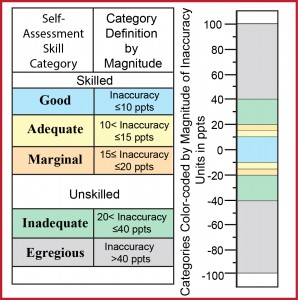by Jessica Santangelo, Ph.D. Hofstra University
For those interested in helping students develop strong metacognitive skills, Dr. Saundra McGuire’s book, Teach Students How to Learn: Strategies You Can Incorporate Into Any Course to Improve Student Metacognition, Study Skills, and Motivation, is concise, practical, and much less overwhelming than trying to figure out what to do on your own. It is both a consolidation of the research surrounding metacognition, mindset, and motivation and a how-to guide for putting that research into practice.
I have been interested in metacognition for several years. Having waded through the literature on teaching metacognition (e.g., using tutors, student self-check, writing assignments, reflective writing, learning records, “wrappers”, or any number of other strategies) I found Dr. McGuire’s book to be an excellent resource. It places many of the strategies I already use in my courses in a larger context which helps me better articulate to my students and colleagues why I am teaching those strategies. I also picked up a few strategies I had not used previously.
While metacognition is the focus of the book, Dr. McGuire includes strategies for promoting a growth mindset (Chapter 4) and for boosting student motivation (Chapters 7, 8 and 9). I hadn’t expected such an explicit focus on these two topics, but the book makes clear why they are important: they increase the probability of success. If students (and faculty) have a growth mindset, believing that success is due to behaviors and actions rather than innate talent or being “smart”, they are more likely to embrace the metacognitive strategies outlined in the book. The same principle applies to a person’s emotional state. Both emotions and learning arise in the brain and affect each other. If students and faculty are motivated to learn, they are more likely to embrace the metacognitive strategies.
The part of the book that is perhaps most practically useful is Chapter 11: Teaching Learning Strategies to Groups. Dr. McGuire details an approach she has honed over many years to teach metacognitive skills to groups of students in one, 50-minute presentation (a detailed discussion of the metacognitive skills and evidence for them are provided in Chapters 3-5). Slides that can be tailored for any course are available at the book’s accompanying website, along with a video of Dr. McGuire giving the presentation throughout which she sprinkles in data and anecdotes that foster a growth mindset and increase student motivation.
Before reading Dr. McGuire’s book, I had had success using several strategies to promote student metacognition. I had a student go from failing exams to making high C’s, and other students move from C’s to B’s and A’s. However, I felt like my approach was haphazard since I had pulled ideas from different places in the literature without a cohesive framework for implementation. The book provided the framework I was missing.
This semester, I decided to use Dr. McGuire’s cohesive 50-minute session to see its impact on my students. I adapted it to be an online workshop because 1) I have limited class time this semester, and 2) an online intervention may benefit my colleagues who are interested in this approach but who aren’t able to use a class period for this purpose. In addition to the online workshop, I re-emphasize key points from the book when students come to office hours. I use phrasing and examples presented in the book to reinforce a growth mindset and boost motivation. I intentionally discuss “metacognitive learning strategies” rather than “study skills” because, as Dr. McGuire points out, many students think they have all the “study skills” they need but are often intrigued by how “metacognitive learning strategies” (which most have not heard of before) could help them.
You can jump in with both feet, as I did, or start with one or two strategies and build from there. Either way, this book allows you to take advantage of Dr. McGuire’s extensive experience as Director Emerita of the Center for Academic Success at LSU. I anticipate my copy will become dogeared with use as I continue to be metacognitive about my teaching and the strategies that work best for me, my students, and my colleagues. Stay tuned for an update on my online adaptation of Dr. McGuire’s session once the semester wraps up!
